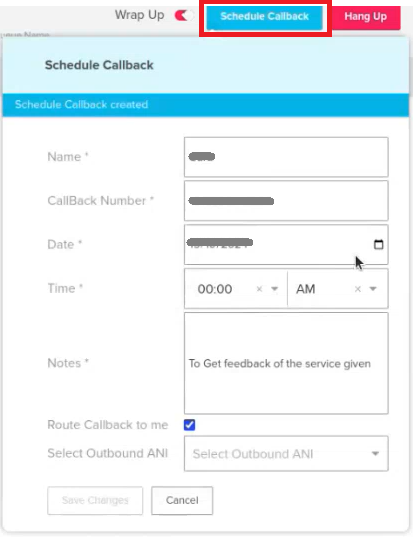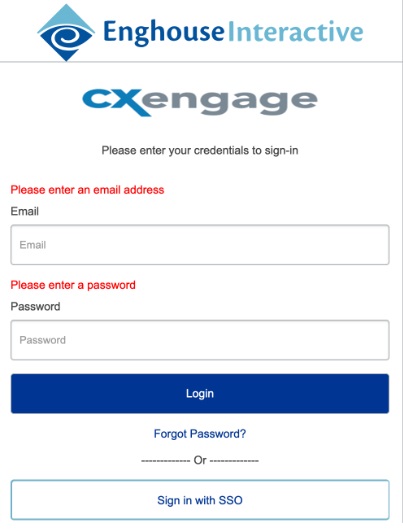Early Access to New Skylight and Skylight Desktop Features
When new features are added to Skylight and Skylight Desktop, they will be first introduced on the appropriate BETA site.
URLs by Region
Use the appropriate URL to access the BETA version of Skylight based on your tenant's region:
North America: https://beta-skylight.cxengage.net
Europe: https://beta-eu-skylight.cxengage.net
Use the appropriate URL to access the BETA version of Skylight Desktop based on your tenant's region:
North America: https://beta-desktop.cxengage.net
Europe: https://beta-eu-desktop.cxengage.net
Release Notes
When a new feature is introduced to the BETA Skylight and Skylight Desktop versions, release notes for the feature will be added to this page. A link from the CxEngage Release Notes will indicate that updated information exists for the BETA sites.
Here is a summary of the features and fixes included with the latest BETA release.
| CxEngage Release 24.11.02 | |
|---|---|
| All Regions | November 02, 2024 |
Production updated with these changes on 11/09/2024.
Update: Schedule Callback in
The new Schedule Callback feature allows you to arrange a customer callback for a specific day and time.
This new feature lets an agent schedule a customer callback during the initial interaction. A note can be added that explains why the callback is needed so that the agent quickly understands the reason for the callback.
Setting Up Schedule Callback
When setting up the Schedule Callback feature, you will need to create a flow that has Schedule Callback enabled. You will also want to keep your original flow which will have Schedule Callback disabled. Your agents can move between the two flows if necessary.
Create a Flow with Scheduled Callback Enabled
First, you must create a new flow that has Scheduled Callback enabled.
-
Go to Flows > Flows.
-
Select your existing flow and make a copy of the latest version.
-
Rename your copy and click Submit.
-
Select the flow you just saved.
-
Click the Settings icon.
-
On the Flow Default tab, scroll down to Scheduled Callback Enabled.
-
Click to toggle it to On. The toggle changes to green.

-
Click Publish to share your updated flow with others.
Note: You may want to keep a flow that has Scheduled Callback Enabled turned off.
Add Flow to an Outbound Identifier
After enabling Scheduled Callback in the flow, you must add the flow to the Outbound Identifier.
-
Go to Configuration > Outbound Identifiers.
-
Create a new Outbound Identifier for your Enabled Schedule Callback flow.
-
Ensure that the correct Flow Id is selected; one in which Scheduled Callback is enabled.
-
Click Submit to save your changes.
Note: You may want to create an Outbound Identifier for your Disabled Scheduled Callback flow.
Add Outbound Identifiers to an Outbound Identifier List
After adding the Outbound Identifiers, you must add them to the Outbound Identifier List.
-
Go to Configuration > Outbound Identifiers Lists.
-
Select the Outbound Identifier List you want to modify.
-
Click the Add (+) button. The Add list items window pops up.
-
On the Add list items: Outbound Identifier List window, click the Add (+) button for the Enabled Scheduled Callback outbound identifier you want to add to the list.
Note: If you created a Disabled Scheduled Callback outbound identifier, add it to the Outbound Identifier List now.
-
Close the window.
-
Click Submit to save your changes.
Note: Ensure that the Outbound Identifier List with Scheduled Callback is assigned to the proper Groups. This will ensure that agents are able to use Scheduled Callback in .
Show Schedule Callback in
In , the agent will see the new Outbound ANI for the flow that has Scheduled Callback enabled.
Note: If you added an Outbound ANI that has Scheduled Callback disabled, the agent will see that in the list as well.
When the agent is in an interaction and Scheduled Callback is enabled, the Schedule Callback button displays.
Scheduling a Callback
At any time during the interaction an agent can click the Schedule Callback button. The Schedule Callback screen pops up.

The agent will:
-
Enter the Name of the customer to call back.
-
If the Callback Number does not automatically populate, enter the phone number to call back. Also, the number can be changed if the call back should be made to a different number.
-
Enter or select a Date on which the callback should take place. The agent must select a future date.
-
Select the Time that the callback should take place. The agent must select a future time. If the time selected is in the past, the scheduled callback will occur immediately.
Note: The callback is scheduled based on the agent's time zone. -
Enter Notes relative to the callback. Notes explain why the callback is needed and what should be addressed during the callback.
-
Check the Route Callback to me box, if the callback should be placed directly in the agent's queue. Otherwise the callback is directed to a queue, which is defined by a setting in the flow.
-
Select the Outbound ANI.
-
Click the Save Changes button to save the scheduled callback.
The agent then completes the interaction as usual.
Accepting a Callback
When the scheduled callback day and time are met, a notification displays on the agent's screen. When the agent accepts the callback, the callback number automatically dials and the call interaction window displays. The interaction is marked at the top with “Notes: Callback Interaction” and the Note that the agent entered when the callback was scheduled displays.
At this point, the interaction is the same as any other voice interaction. Once the interaction is complete, the agent can schedule another callback, perform Wrap-up, or complete any other necessary tasks.
Note: If the agent is not available when the schedule callback day and time are met, the next time the agent logs in, a notification displays. If the Fallback to Queue setting in the flow is defined, the interaction is handled based on that setting. For example, if the agent is unavailable and Fallback to Queue is set to go to queue after one hour, once the scheduled callback is one hour old the interaction is sent to the queue and offered to another agent.
Update: Enghouse Interactive Branding
Users will see a newly branded Log In page in and CxEngage.


